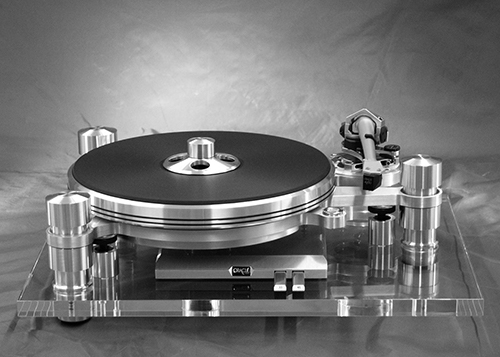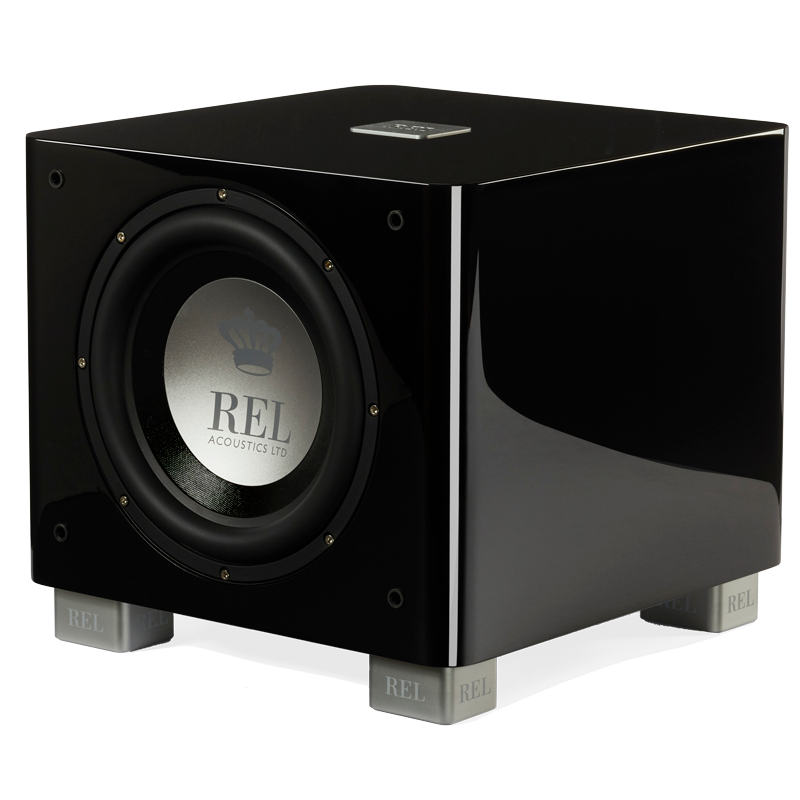Blog
Suspending Disbelief
Optimizing For Turntables

Since the level of education coming from the turntable manufacturers has dropped off, even as sales of analog have picked up briskly, we felt it time to give analog lovers a proper education in how to get the most from their turntable rigs. Combining the most enjoyable playback form with the transformative effect of adding RELs underneath your analog system to create a best of all worlds scenario is intoxicating. However, a few simple concepts need to be adhered to in order to avoid common pitfalls such as acoustic feedback when building truly full range systems based around RELs or the few other subs that truly go deep.
What other form of musical storage has provided as many “Oh my goodness” moments in the lives and experiences of audiophiles through the years? With 23 years designing phono cartridges that many have enjoyed for three decades and having spent hours in discussion with many of the world’s turntable masters—chief among them Alastair Robertson-Aikman of SME–I have a balanced and carefully informed opinion of what does and doesn’t work when trying to build an ultimate full range music system incorporating state of the art subwoofers, such as RELs, into music systems based on vinyl playback. Consider this a short course in how to approach the physics of building full range turntable-based systems, under pinned by the full deep bass of REL subs.
What is needed for a turntable to deliver the goods in full range systems? In a word, isolation. Specifically, full spring suspended turntables as lesser designs don’t hold up to the demands of a REL-based truly full range system. The number of turntable designs that have turned to some version of a semi-decoupled design using an elastomeric foot is largely to blame. These turntables cannot properly produce deep bass. Full range sound without going into acoustic feedback requires using spring suspended turntables to deal with the extra low bass afforded by quality subwoofers reproducing the bottom octave. Let me be clear, running full range down into the mid-to-low 20 Hertz range requires vastly more isolation than when running main speakers that typically run out of bass somewhere in the mid-30 Hertz to mid-40 Hertz range. We love the budget turntables best embodied by the legendary Rega 3 or the most affordable and best bang for the buck budget deck, the Pro-Ject Debut Carbon. These deliver a huge amount of sonic value and can sound wonderful, yet they struggle when confronted with truly deep bass.
Let’s clear up another common misconception, simply using a heavy mass-loaded deck that still does not offer full spring or opposing-magnet, full flotation isolation will not get the job done either. These turntables are often fairly expensive; again, they can sound quite nice in the proper (frequency-limited) circumstances but are often not much better equipped to deal with the very high energy and deep bass than a budget deck. Please be careful in spending significant sums of money on turntables that do not feature a full spring-based suspension. There are a number of relative newcomers to the world of turntable design and production, many of these popping up as analog enjoys its current resurgence. In many cases—not all—these are best steered away from. The finest companies making analog turntables are almost all older than 30 years and they’ve learned a thing or three hundred during that time.
How to deal with this issue of feedback? And what does it sound like? Feedback is sound from your system being played back through your speakers and re-coupling with the turntable. It forms an energy loop that can build on itself, eventually running away into a howl. Usually, we hear about it from a confused customer who calls and says something like “My system with my new REL sounds great when listening to CD’s or streaming, but when I try to play records it sounds like a plane that wants to take off. There’s all this rumble and then it makes a loud whoom and starts playing this bass sound louder and louder.” That would be oscillation from feedback, created when the source –in this case, the turntable–has its limited-capability elastomer foot suspension overwhelmed by the nature of the music played (loud, driving rock or reggae sets it off far faster than chamber music, for example), the volume it is being played at, and the combination of turntable/tonearm/cartridge used. Significantly, it is not your new REL at issue, it is the inability of your turntable to deal with full range musical energy.
The best solution is to step up in quality of turntable to a full suspension design, of which there are many including the Oracle shown above. Likely the most famous would be the Linn Sondek, but there are an enormous number of quality choices using full spring-based isolation systems. These work so much better than the rigid plinth with a little rubber foot underneath found in budget decks because the small springs act as a mechanical filter through which the large bass waves cannot pass. In really expensive turntables such as the large SME’s, this usable bass extends down easily into the region below 10 Hz. For sprung turntables at far lower cost, designs like Oracle’s Delphi or the SME 20’s that use various spring materials feature a certain amount of mass—this weight acting to both lower the frequency at which the system goes into oscillation and also to resist it going into oscillation at all as it takes far more energy for a heavy thing to be set off, then a lighter design such as the affordable ‘tables already mentioned.
Solutions Then and Now:
For very little money, a UK company called Townshend Audio used to make a product called the Seismic Sink which worked wonderfully to combat run away oscillation in turntables, especially the affordable designs. Sadly, that design has been out of production for a decade—please Mr. Townshend, build these units again, they were wonderful and affordable at around $400/£300. I mention this as used ones occasionally come up on the market and nothing currently produced seems to offer the same benefits. Townshend now offers some feet that while well-engineered do not appear to possess the same ability to isolate down into the single Hertz frequency range as the older model.
While I have not used the next product mentioned, my old friend Michael Fremer has good things to say about this unit currently for sale by Gingko Audio. Reasonably affordable at around $600 from the U.S. it is rated down to 13 Hz; it might do the trick for medium-priced rigs, though this figure (13 Hz) is higher than I would like to see.
At the pricey end of the market, special air spring isolation tables designed to isolate down to below 1 Hz exist—we used a number of these at Sumiko for years as it rendered all issues of acoustic feedback instantly moot. These cost more than most very good turntables at $6,000-10,000 for an isolation table so for best use of your audio investment funds, spending more on a high quality suspended sub-chassis turntable will produce the best results for the least amount of investment.
In the end, whatever it takes to produce true isolation from one’s analog turntable running RELs in true full range systems is well worth it. Years ago, while teaching MASTERS classes to dealer personnel, we had a particularly tough customer. He arrived wearing black leather jackboots, a torn t-shirt, affecting a skinhead look with some sort of tribal symbol that had been cut into the skin of his forehead and filled with black ink. The overall effect, presumably intended to convey menace or a threatening appearance fell short of its goal—the young man coming across, instead as distant and vacant. Throughout the first two days of training, he remained resolutely—almost combatively–distant and unimpressed by everything my staff and I did during our teaching and demos. Most of the time, he sat bored, displaying no emotion with his arms folded while he had this thousand-yard stare looking for something he found, apparently, far more interesting.
On the last morning, while teaching a module I titled Art of the Demo™, I played the lovely Water Lily record by Filipina singer Saysetha, and her haunting solo version of the old Irish ballad Danny Boy on our state of the art analog rig using the SME 30 MKII turntable fitted with my last great cartridge design the Palo Santos Presentation; the SME being generally recognized as, for all practical purposes, the finest turntable of all time. The whole system, including Sonus Faber Stradivari Homage, under scored by a REL Reference design of the day. As the final notes died away, echoing into a foreverness of space and micro-reverberances that no digital rig at any price will ever be able to even vaguely approximate, I was shocked to see His Vacantness sitting with tears streaming from the corners of his eyes. He was completely undone, gutted by the raw emotionality and beauty this amazing combination of state of the art analog and a recording so beautiful it pulled emotion from even his world weary soul.
Two months later, our Western Regional Manager stopped by his store where he was greeted by a young man sitting behind the counter that was so different than the last time he had seen him that he literally did not recognize him. Short hair, carefully brushed, no tattoo—a little scarring left—a young man eager to talk about how his visit had transformed him. He was starting his first semester in junior college later that Fall, hoped to see us again soon and thanks for helping him find himself. Only great systems can deliver at this level. We’d like to think we were a small part of that transformation. The entire reason we pursue this dream, this lifelong quest to build systems this special is for these rare, life changing moments. Once heard, they can never be unheard, once felt you can never unfeel the emotion. For some of us, this is powerful enough to fuel a passion, and forge a career.











